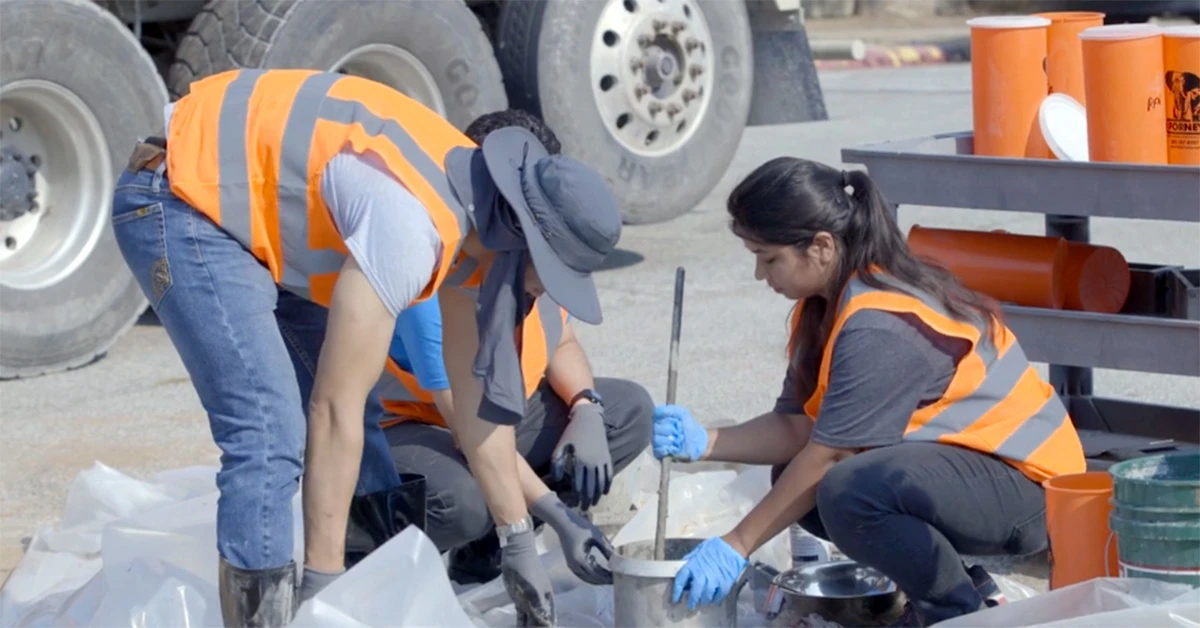Engineering Students Research Concrete Cost-Saving Technique for Highway Projects
JONESBORO – Research into cost-saving and environmentally beneficial concrete ingredients is showing progress at Arkansas State University.
When a new, wider sidewalk was poured in the area between Dean Street residence halls and the Reng Student Union, it ordinarily would have attracted no more attention than a typical summertime campus improvement project.
Instead, engineering students under the direction of associate professor Dr. Zahid Hossain were assessing the results of an experimental concrete design. Those involved included Raiyan Chowdhury, a graduate student in the master’s program in engineering management; mechanical engineering student Hau Ho; civil engineering students Mohammad Alnakhali and Ziyad Almalki; and recent civil engineering graduate Joshua Hurd. Undergraduate civil engineering major McKenzie Cornell also worked on the project at an earlier stage.
This field demonstration was an implementation of two research grants. One is funded by the U.S. Department of Transportation (USDOT) through Trans-SET (Transportation Consortium of South-Central States), in which A-State is a member, while the other is from the Arkansas Department of Transportation (ARDOT).
“The purpose of this study was to assess alternative sources as supplemental cementitious (cement-like) materials in a sustainable manner,” Hossain said. “We tried reclaimed fly ash retrieved from an old landfill to prepare new paving concrete.”
A Federal Highway Administration research report describes fly ash as a fine-grained, powdery particulate material produced from burning pulverized coal in a coal-fired boiler.
“In the lab, we tested its short-term workability and long-term strength and durability,” Hossain continued. “We performed the mix design, batched them and tested trial mixes. We found promising results of reclaimed fly ash compared to typical class F fly ash.” Class F fly ash is usually derived from burning anthracite or bituminous coal.
His students performed all the testing work in the lab in preparation for the cooperative effort. A-State Facilities Management provided and prepared the test site and did the finishing work; NEAR Ready Mix prepared 10 cubic yards of custom concrete using the researchers’ mix designs and donated all aggregates and cement; and Boral Resources donated about 2,000 pounds of ash samples.
At the test site, two sections were constructed, one with reclaimed fly ash and the other with regular class F fly ash.
“It was a good learning experience for four students to get hands-on training in the concrete batching, manufacturing and placement processes,” Hossain also said. “From the material sustainability perspective, the use of reclaimed fly ash has a two-fold benefit: it reduces the waste and reduces the demand of producing cement. We have replaced 20% cement with reclaimed fly ash, which is considered waste. For this small test site, we used about 1,200 pounds of waste material to produce concrete. Thus, for a big project, we can cut down the cement usage by several tons.”
The study concluded:
- reclaimed fly ash is a viable alternative for cement, as it can produce more durable concrete
- use of reclaimed fly ash in concrete can cut down the cement usage by about 20%
- The material cost of concrete is expected to be reduced by about 15%
- use of reclaimed fly ash will consume waste materials stockpiled in old landfills.

